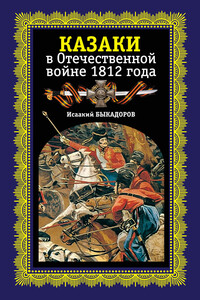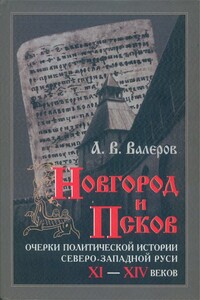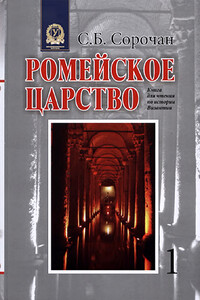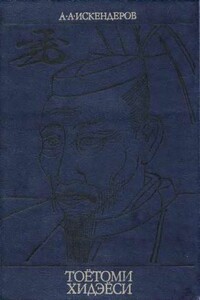Бояре, отроки, дружины - [201]
• Zuckerman 2011 – Zuckerman C, On the Kievan Letter from the Genizah of Cairo // Ruthenica, т. X, Киïв, 2011, с. 7–56.
Список сокращений для летописных памятников
• ИпатЛ – Ипатьевская летопись
• ЛаврЛ – Лаврентьевская летопись
• МосАкЛ – Московская Академическая летопись
• НС – Начальный свод
• Н1Лм – Новгородская Первая летопись младшего извода
• Н1Лс – Новгородская Первая летопись старшего извода
• Н4Л – Новгородская Четвёртая летопись
• НовСофС – Новгородско-Софийский свод
• ПВЛ – Повесть временных лет
• РадзЛ – Радзивиловская летопись
• С1Л – Софийская Первая летопись
• ТрЛ – Троицкая летопись
Summary
This study aims to define the forms and makeup of the elite in the 10>th and 11>th century society of Rus', and to identify those involved in making critical military and political decisions. The key challenge of such a «sociological» approach is that the Rus'ian society was rather poorly structured (just as elsewhere in Europe during early medieval time) yet far from homogenous. What mattered there was the actual power or authority rather than legal aspects.
A reasonably straightforward information on the polity called Rus' had been available since about early 10>th century. Its 9>th century «prehistory» is beyond the scope of this study; evidence on that time is scarce and controversial. Both historic and source-related factors define the upper chronological boundary of the study period as the late 11>th – early 12>th century. At that point the disintegration of the Rus'ian state, once relatively unified, becomes obvious and irreversible. This study relies upon the Kievan Rus'ian «classics» covering the period prior to the breakup. These sources include the 10>th-century treaties between Rus' and Byzantium; the early chronicle-writing, first of all, Povesť Vremennykh Let (“The Tale of By-Gone Years”); Russkaya Pravda (“The Rus'ian Justice”), and the earliest hagiography.
Methodologically, in this study, (i) for the pre-1000 CE period, non-chronicle sources were given priority; (ii) the chronicle evidence was analyzed in light of the results of textual studies, especially those where techniques and approaches developed by Alexey A. Shakhmatov were used; and (iii) the evidence on Rus' was compared to that on similar early medieval European societies, such as the 6>th-9>th century barbarian kingdoms or 9>th-11>th century Scandinavian and Slavic polities.
Chapter I discusses the concept of družina (retinue) in modern German-, English-, Polish-, Czech-, and Russian-language historiography.
Chapter II analyzes the usage of the word družina in 9>th-11>th-century Old Slavonic and Church Slavonic texts, as well as in Old Russian sources of the 11>th-12>th centuries. That analysis suggests that the term družina shall not be used to describe Rus' social organization, contrary to Russian-language historiographic tradition. The early sources used družina mostly as a generic term to refer to comrades, partners, or associates. In some contexts (mainly in chronicles) the meaning was narrower – prince's (kniaz) men/army, but even defined that way the term is still not suited to refer to social groups/strata. In a scientific context, it might be applied to archaic, non– or loosely hierarchical warrior communities, but not to an advanced social organization like the one present in the 10>th—11>th century Rus'.
Chapter III deals with the corps of princes' military servants, referred to in Rus' as otroki or – more specifically – grid' (a borrowed Old Norse word). The corps of this kind had their counterparts in northern and central Europe of 10>th and 11>th centuries. The Czech historian František Graus called them «the grand retinue» (velkodružína). These professional warriors played a major role during the emergence of the centralized political framework, but have disappeared or degenerated as early as the 12>th century. Rus'ian records describe them as prosperous in the 11>th century and allow to trace their degeneration during the 12>th and 13>th centuries in great detail.
Chapter IV looks into the makeup of the 10>th century ruling class (based primarily on the 911, 944, and 971 AD treaties between Rus' and the Byzantium vs. data from Constantine Porphyrogenitus' treatises). Special attention is given to the emergence, over the course of the 11>th century, of the class of nobility to which the term boyarin (pi. boyare) has become attached. The 11>th century boyars have become a counterpart of the nobility as it appears in the early medieval European polities: a socially well-defined and recognized group whose members' rank/status is (mostly) hereditary, but statutory privileges are not yet formalized.
The 10>th– 11>th century Rus'ian elite was in flux, and its evolution reflected the complex and dynamic development of the political and social framework of the early medieval gens. In the middle of the 10>th century, it included (i) a small group of leaders/warlords (quasi-rulers), mostly not related by blood; (ii) noblemen related to those leaders/warlords one way or another (usually through service), and (iii) the wealthiest urban citizens. The 11

Отечественная война 1812 года – одна из самых славных страниц в истории Донского казачества. Вклад казаков в победу над Наполеоном трудно переоценить. По признанию М.И. Кутузова, их подвиги «были главнейшею причиною к истреблению неприятеля». Казачьи полки отличились в первых же арьергардных боях, прикрывая отступление русской армии. Фланговый рейд атамана Платова помешал Бонапарту ввести в бой гвардию, что в конечном счете предопределило исход Бородинского сражения. Летучие казачьи отряды наводили ужас на французов во время их бегства из Москвы.

В монографии освещаются ключевые моменты социально-политического развития Пскова XI–XIV вв. в контексте его взаимоотношений с Новгородской республикой. В первой части исследования автор рассматривает историю псковского летописания и реконструирует начальный псковский свод 50-х годов XIV в., в во второй и третьей частях на основании изученной источниковой базы анализирует социально-политические процессы в средневековом Пскове. По многим спорным и малоизученным вопросам Северо-Западной Руси предложена оригинальная трактовка фактов и событий.

Книга для чтения стройно, в меру детально, увлекательно освещает историю возникновения, развития, расцвета и падения Ромейского царства — Византийской империи, историю византийской Церкви, культуры и искусства, экономику, повседневную жизнь и менталитет византийцев. Разделы первых двух частей книги сопровождаются заданиями для самостоятельной работы, самообучения и подборкой письменных источников, позволяющих читателям изучать факты и развивать навыки самостоятельного критического осмысления прочитанного.

"Предлагаемый вниманию читателей очерк имеет целью представить в связной форме свод важнейших данных по истории Крыма в последовательности событий от того далекого начала, с какого идут исторические свидетельства о жизни этой части нашего великого отечества. Свет истории озарил этот край на целое тысячелетие раньше, чем забрезжили его первые лучи для древнейших центров нашей государственности. Связь Крыма с античным миром и великой эллинской культурой составляет особенную прелесть истории этой земли и своим последствием имеет нахождение в его почве неисчерпаемых археологических богатств, разработка которых является важной задачей русской науки.

Автор монографии — член-корреспондент АН СССР, заслуженный деятель науки РСФСР. В книге рассказывается о главных событиях и фактах японской истории второй половины XVI века, имевших значение переломных для этой страны. Автор прослеживает основные этапы жизни и деятельности правителя и выдающегося полководца средневековой Японии Тоётоми Хидэёси, анализирует сложный и противоречивый характер этой незаурядной личности, его взаимоотношения с окружающими, причины его побед и поражений. Книга повествует о феодальных войнах и народных движениях, рисует политические портреты крупнейших исторических личностей той эпохи, описывает нравы и обычаи японцев того времени.

В книге рассказывается история главного героя, который сталкивается с различными проблемами и препятствиями на протяжении всего своего путешествия. По пути он встречает множество второстепенных персонажей, которые играют важные роли в истории. Благодаря опыту главного героя книга исследует такие темы, как любовь, потеря, надежда и стойкость. По мере того, как главный герой преодолевает свои трудности, он усваивает ценные уроки жизни и растет как личность.